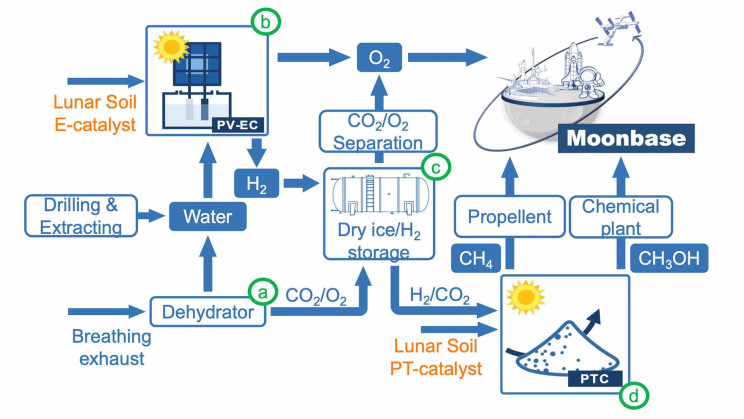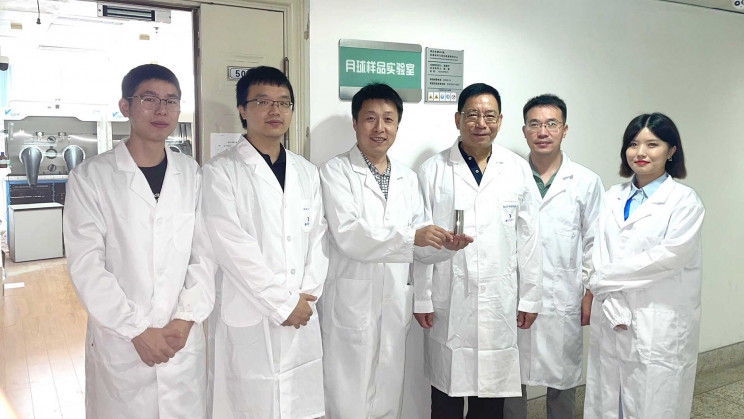Play below for the audible version of this article:
We’re edging closer to livable conditions on the moon.
Last year, an instrument on NASA’s Perseverance rover on Mars made oxygen from the Red Planet’s carbon dioxide atmosphere. Performed by Moxie – the Mars Oxygen In-Situ Resource Utilization Experiment – the strategy definitely incited hope for extraterrestrial survival. Future human missions could take versions of Moxie to Mars instead of carrying oxygen from Earth to sustain them.
But, Moxie is powered by a nuclear battery onboard. “In the near future, we will see the crewed spaceflight industry developing rapidly,” said Yingfang Yao, a material scientist at Nanjing University.
And, long-term survival on the moon shall be a turning point in manned deep space exploration. “Just like the ‘Age of Sail’ in the 1600s when hundreds of ships head to the sea, we will enter an ‘Age of Space.’ But if we want to carry out large-scale exploration of the extraterrestrial world, we will need to think of ways to reduce payload, meaning relying on as little supplies from Earth as possible and using extraterrestrial resources instead,” he continued.
Yao and Zhigang Zou, another material scientist at Nanjing University, explore whether lunar resources can be used to facilitate human exploration on the moon or beyond.
They published a study in the journal Joule, reporting that soil on the moon contains active compounds that can convert carbon dioxide into oxygen and fuels.
What does the moon have in store for us?
There’s no air to breathe on the moon. However, several elements such as argon-40, helium-4, oxygen, methane, nitrogen, carbon monoxide, and carbon dioxide have been detected in the lunar atmosphere.
While Earth-based spectrometers have detected sodium and potassium, the Lunar Prospector Orbiter found radioactive isotopes of radon and polonium. In 2012, the Lunar Reconnaissance Orbiter detected helium.
Meanwhile, the lunar regolith has been formed by meteorites’ constant impact, which has pulverized underlying coherent rock. All material sampled from lunar cores has shown evidence residing at the surface.
The layers of the regolith comprise meteorite, solar particles, and cosmic-ray bombardment. And the exposed surface layers contain implanted solar material such as rare gases and elements transported from the sun in the solar wind. In rocks of the moon, oxygen is the most abundant chemical element.

Here, Yao and Zou hope to design a system that employs lunar soil and solar radiation, the two most abundant resources on the moon. Their team analyzed the lunar soil brought back by China’s Chang’e 5 spacecraft and found the sample to contain compounds such as iron-rich and titanium-rich substances that could work as a catalyst to make desired products such as oxygen using sunlight and carbon dioxide.
The proposed strategy? “Extraterrestrial photosynthesis”. The system would use lunar soil to electrolyze water extracted from the moon and into astronauts’ breathing exhaust into oxygen and hydrogen-powered by sunlight. The carbon dioxide exhaled by moon inhabitants would also be collected and combined with hydrogen from water electrolysis during a hydrogenation process catalyzed by the lunar soil.
This process generates hydrocarbons such as methane which could be used as fuel.

Extraterrestrial survival is close
According to the researchers, the strategy utilizes no external energy but sunlight to produce water, oxygen, and fuel – desired products that could support life on a moonbase. The team is currently looking for an opportunity to test the system in space, likely with China’s future crewed lunar missions.
“We use in-situ environmental resources to minimize rocket payload, and our strategy provides a scenario for a sustainable and affordable extraterrestrial living environment,” Yao said.
Though the catalytic efficiency of lunar soil is less than catalysts available on Earth, the team is testing different approaches to improve the design, such as melting the lunar soil into a nanostructured high-entropy material, which is a better catalyst, Yao said.
Lunar soil or the components extracted from lunar soil can essentially reduce the load and cost of a spacecraft, thereby improving the feasibility and durability of human survival with ‘high economic efficiency, giving high hopes to future manned missions.
